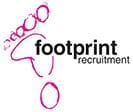Harnessing Hybrid Teams
)
Whether we love it or hate it, there is no doubt that for many of us the way our teams work has forever changed. For many of you it's likely that your once 100% on site team is a mix of remote, on site and combination workers, and for others you have switched to a predominantly remote model.
In my opinion, what's happened was always destined to happen, we have just fast tracked the process by 10 + years. Employees have been crying out for the opportunity to have more flexibility in where they work for too long. Work from home requests getting met with rejection after rejection, and the rules attached to them, were seeing increased frustration, and the companies who could embrace it were, in some industries, winning the talent war.
But the reality is most businesses weren't offering it as an option, or even allowing it when there was seemingly no other alternative, so employees didn't have the choice, they were stuck in roles, or not able to work to full capacity, or choosing other career options temporarily.
Now, most businesses are offering flexibility, and some sort of at least part work from home as an option. Flexibility itself is no longer a 'perk' but rather the norm. So, if you're in an industry where others are offering this but you are holding back, you may find it hard to attract and keep top talent in your team.
Before we go further, perhaps I should explain what I mean when I say 'hybrid' teams. Traditionally this has been a very 'us' and 'them' approach there were those who worked in the office, and those who were remote the two combined was a hybrid team. But in the new world of work a hybrid team is much more fluid. Most often employees will mix working from home and the office, sure some may be all in and some all remote, but more and more often our hybrid teams involve a fluid, ever changing mix of work locations and on site attendance.
Our ability to harness hybrid teams in the new world of work will determine just how successful we can be in the game of businesses. Those who struggle and resist will undoubtedly not only find it hard to attract and retain top talent, but also will find themselves less productive and efficient as others, as they won't be able to appropriately harness the efficiency benefits that hybrid teams can offer.
Now don't get me wrong, of course there can be challenges with hybrid teams, and if not lead, managed and harnessed effectively they can become a real problem for businesses. So having them alone is not enough, structuring and leading them well, and knowing how to get the most out of them is critical. Keeping the connectiveness of the social fabric that we know to be so important to engaged teams, dealing with issues of visibility and of course understanding how to measure based on outputs rather than inputs are all part of this challenge.
So with that being said, how can we get the most out of this new way of work? These are my 3 top tips.
Communication is King this is not a new concept, and in fact across all types of teams and workplaces I believe this to be the case, but in hybrid teams it requires a whole new focus. Think about how and when you communicate, and importantly ensure that your communication is consistent across both in person and remote team members. Lean into the technology available, especially around video, but also remember a simple phone call is so, so powerful.
Remember too about the non formal aspects of communication, and create ways for social connections to continue between both in person and remote or virtual team members.
Adopt a Remote First culture - this one may take a little longer to implement and get your head around, but can be an absolute game changer in ensuring you don't create a situation where you have 'us' and 'them' at play in the workplace. What I mean here is creating a culture where the remote workforce is considered the primary workforce, and ensure that structures, processes, protocols and etiquette are built with this in mind. Doing this ensures that those not present 'in person' and on site will not feel left out, and staff can truly be present equally from any location.
Get focused on measuring results and productivity - this might seem like a no brainer to those of you who have already adapted to this, but honestly it remains the biggest stumbling block for most businesses. If you're measuring attendance and time at the computer screen rather than the results being produced, you're hybrid team is destined for disaster. Sure you want boundaries and set working hours, but that's about reducing burnout, not about measuring value and performance.
These 3 top tips are by no means an exhaustive list but they are three easy ways you can massively impact the success and leverage of your hybrid workforce.
An invitation: If you'd like to connect with other business owners, leaders and managers in a group focused on all things HR, people and team management we'd love for you to join us over on our free Facebook Group HR Support for Australian Businesses - www.facebook.com/groups/hrsupportaustralia
) Author:Kristy-Lee Billett
Author:Kristy-Lee BillettAbout: Kristy-Lee has worked in the field of HR and recruitment since 1999. She holds undergraduate qualifications in Psychology, a Masters in Human Resource Management, is an Professional Member of the Australian Human Resources Institute.
Connect via:LinkedIn




